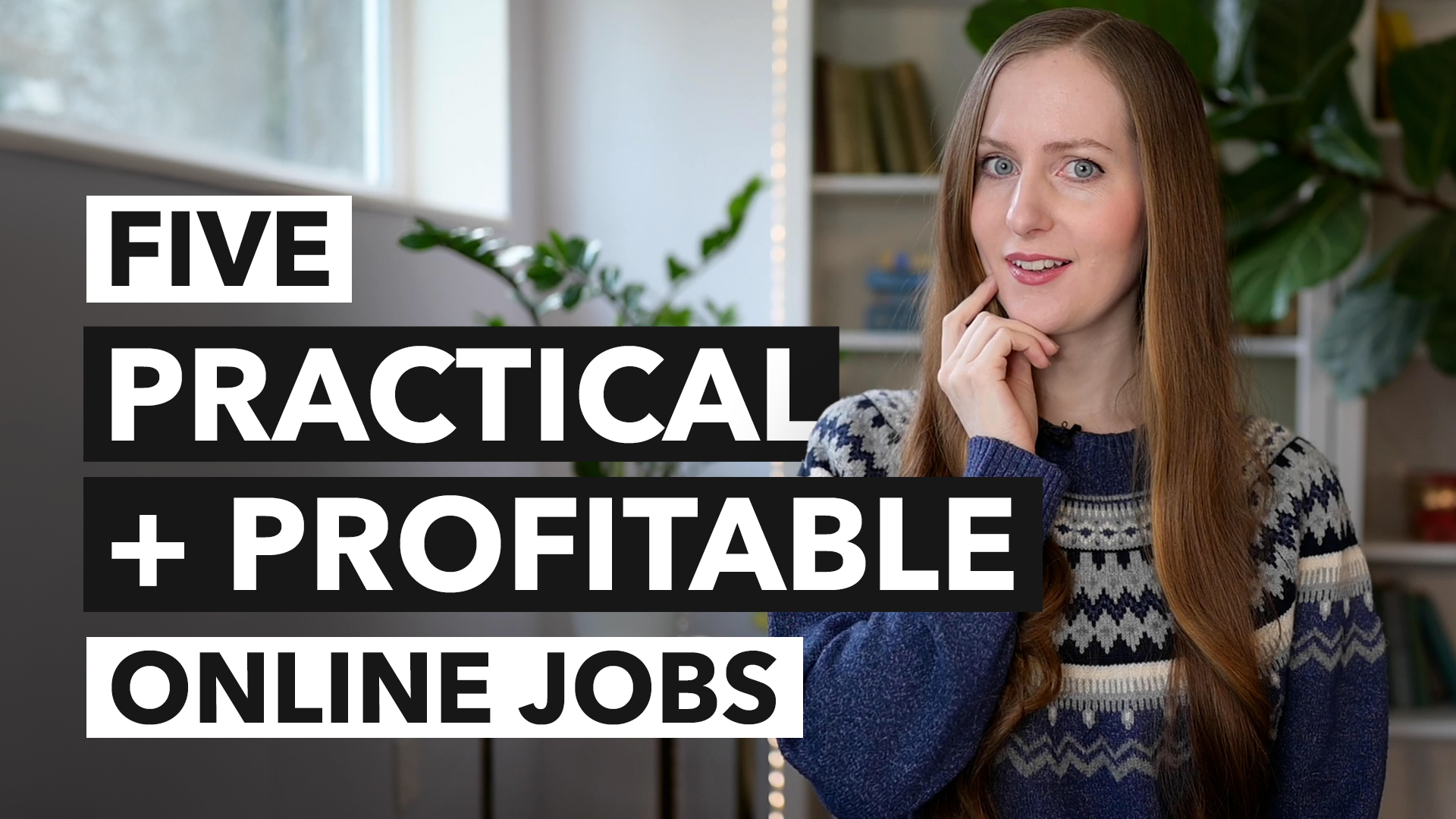The Ultimate Beginner’s Guide for Making PASSIVE INCOME (2022)
So, you want to begin making passive income?
We’ve been able to make passive income for a long time, but it wasn’t until around the industrial revolution where things really changed. Once more advanced machinery was invented, the trajectory shifted in what was possible in terms of creating income.
Technology has advanced an incredible amount in just a short few years, and we now have software that we can program to tell these machines what to do, and, essentially, they begin doing the processes on their own.
What does this mean for making passive income?
Lending money and earning interest on that money has been a standard for creating passive income for years, but, now, with the increased technology and automation capacity, you have a plethora of different choices to earning that passive income stream.
Think about this: You can design a product AND sell it AND have it manufactured AND delivered without you even touching the product! How far we have come!
How does passive income work?
Have you heard people talking about how passive income is trying to make something out of nothing? Or, maybe you’ve heard people say passive income sounds too good to be true?
Well, the truth is that you can’t create something out of nothing, but that’s not really what passive income is. There are a ton of scams out there that will try to tell you that you can make something out of nothing and that you can get rich quick with one of their marketing schemes. Don’t fall for them.
Most everything built as passive income will require some form of effort, at least initially. With passive income, you’re not creating something out of nothing. Rather, you will be doing one of two things in order to create it: You’ll invest either your time or your money – and then you will need to figure out a way to maintain it.
RELATED: I've made thousands of dollars per month in passive income over the last 5 years. Here's how.
Here are some samples of different types of passive income you could create:
Stocks with dividends
With stocks you are lending companies your money, and they pay you dividends over time on the capital they make. You're providing value to the company who can then invest large sums and create more capital.
Online courses
The value you provide to students is through the information you share, and people will pay you for that perceived value they will gain.
Royalties
Authors and musicians fall into this category of passive income. People pay them for the use of their intellectual content they created.
Rental properties
Real estate is a great way to earn passive income, but it can be more work, especially when it comes to maintenance. You purchase the property, and you’re providing a place to live for someone who pays you rent each month.
Just how passive is passive income?
A majority of people may say that passive income isn’t passive at all, and this is because no matter what you choose to do, it will always require some type of work. Some amount of effort will need to happen to get things started, and many times this includes some sort of financial investment.
Your goal is either to create some type of automated machine or system for a product that will add value to the person you’re selling to, or to purchase an investment that will pay you dividends over time.
We should really call passive income semi-passive income. Anything you do will require ongoing maintenance to ensure things are working properly.
Stocks are mostly passive.
You need to purchase a stock initially, but you’ll be paid dividends for the lifetime of your investment in the stock. However, you could think of it this way, in that you had to do the work ahead of time to earn enough money to purchase the stock. You’ll also need to manage your stock portfolio and keep up with it each month to know how your investments are performing for you. Even stocks are semi-passive.
3 working components to earning passive income
Any form of passive income requires three trade offs:
Effort – to get it off the ground
Risk – time or money (or both)
Return – how profitable will it be?
Any investment you choose will have all three trade-offs: The initial work to get things going (effort), the risk of either time or money as you begin (risk), and not knowing how it will perform and what kind of income you’ll create (return). Nothing requires no effort and no risk with a large return.
Maybe you’ve heard the famous saying, “You can have anything but you can’t have everything.”
What you need to do for yourself is to decide if you want a higher risk and larger reward potential, or if you want to stick with a lower risk but most likely a lower reward potential.
I recommend talking to a few different people who are doing what you want to do and find out from them how it’s going. This is a great way to get feedback so you can evaluate if that particular passive income source is the right avenue for you to pursue.
Ask yourself these two questions as you weigh the different trade-offs:
What are your priorities?
Which aspect is most important to you?
How to start earning passive income this year
You’ve asked yourself the two questions you need to ask about the trade offs, and you’ve decided creating passive income is the path you want to take. Now what? What are your next steps to getting the ball rolling?
STEP ONE: Choose what type of value you want to offer.
Your first step is to decide which type of passive income stream you want to pursue. In order to do this, you’ll want to understand how each type of passive income works, and you’ll want to understand how you can deliver the value you promise to your customers.
So let’s talk about some different options of passive income:
#1 – Affiliate marketing
With affiliate marketing, you are selling a product that someone else provides to customers and you’re earning a commission on each sale you create.
One benefit to being an affiliate for someone else’s product is that you don’t have the delivery step to figure out. All your work comes on the marketing end, but it still takes effort to promote.
In order to be effective in affiliate marketing, you’ll need to build an audience you can sell to. Once you’ve built a relationship with your audience, they will trust your recommendation and buy the product.
Another option to selling affiliate products is with paid advertising. Now, this means you’re trading dollars, so that’s the investment you’re making upfront (some say it takes money to make money). With paid ads, you can usually use them to move the potential customer into a sales funnel created by the company you’re promoting, and they take a bulk of the work from there.
We do something similar with our Creator Fast Track sales funnel. The only thing we ask our partners to do is get their audience to register for our free 3 Secrets to Reach 1,000 Subscribers and Get Monetized workshop, and we take over from there. We are able to close about 5-10% of the leads from affiliate partners by doing this.
The effort here with affiliate marketing is building a system that effectively markets the products someone else is selling.
#2 – Write and self-publish a book
Now, writing a book is A LOT OF WORK! I know this from experience because I did this a few years back. The work is all upfront, and the writing itself can take a bulk of the time.
After you finish writing your book, you’ll want to have it professionally edited and formatted, and then you can self-publish on a platform like Kindle Direct Publishing through Amazon. Much of the effort is upfront, and once it’s published, you can draw royalties for a lifetime.
I self-published on Amazon about four years ago, and ever since I hit “publish,” that book has been drawing in about $200 every month. I really don’t have to do anything for it.
The main effort here is initial, but there is some ongoing marketing or updating you may want to do.
RELATED: 90 Days to Your Bestselling Book – free workshop
#3 – Invest in stocks
If you plan to invest in stocks, make sure they are ones that pay you dividends. The main effort you have is the upfront investment, and then just monthly maintenance of your stock portfolio.
#4 – Invest in small assets
Another good option that’s relatively hands off is the investment of small assets such as metals, gold, silver, platinum, or even purchasing collectibles. All these assets will appreciate in value over time. So, no, you don’t get an initial or ongoing paycheck with this option, but, over time, your money will grow, and eventually you can cash out for a passive payday!
#5 – Real estate
We’ve already talked a good amount about the benefits of real estate, and this does bring with it a higher level of risk.
If you’re creating a rental business, there is a fair amount of work that goes into that part of the process, but you could make it semi-passive by outsourcing the management of the rental properties.
You’ll still need to do some management to oversee that all is going smoothly with the management company, but something to think about is that the property will appreciate overtime as well, and that part is very passive.
#6 – Create and sell online courses
Now this passive income stream is full of work in the beginning. You’re taking a risk with your time because it’s unknown if you will see a return on your time investment.
The good news is that there are quite a few ways to really make this more passive as time goes on. You create the course once, and then you essentially have a product for the long run with some maintenance to update anything that is outdated within the course itself.
A great way to begin is to start selling your course on a platform like Udemy or Skillshare where you can utilize the large pool of students they already have if you work with their algorithm and find a way to be searchable.
The continued effort needed for selling courses is the ongoing marketing it takes to keep the course visible to your audience.
#7 – Sell digital products
Another great option is to sell digital products on a platform such as Etsy. Again, you need to work with the Etsy algorithm and figure out how to get seen on the platform, but once you do this, it is a great way to bring in a more hands-off income.
The most effort comes upfront as you design graphics or templates for those digital products. Once you have them ready, then all you need to do is create an automated digital system for delivering the products to the customer.
#8 – Create a niche print-on-demand store
Again, technology has come a long way, and now it’s possible to create designs for swag merchandise and be hands off in the manufacturing and delivery processes.
When a customer purchases a product you designed in a print-on-demand store, that store will put the design on a T-shirt, mug, journal, or whatever kind of merchandise you are promoting, and they will ship it to your customer.
All you need to do is create your designs and set up your systems. This can be a more passive machine, as it is completely automated once set up.
STEP TWO: Create a plan of how you’ll automatically deliver that value
We’ve talked about this quite a bit, and we’ve discussed what kind of value you could bring with each individual passive income stream, but now it’s time to execute.
I’m going to assume that your goal is not to create a new job for yourself that may be harder and more time consuming than the one you already have! Your goal is to create a passive income stream so you can have more choices and do more of what you love, right?
In order for you to have those two things, you need to create a plan of how you’ll automatically deliver that perceived value to your customers. What production or sales systems can you use to automate your processes?
STEP THREE: Create your product or purchase your investment
Now it’s time to actually do the thing! Are you wanting to create a product (invest your time) or purchase an investment (invest your money)?
Do the thing. Make your investment.
Which one will you choose to start with? A product or an investment? Time or money?
STEP FOUR: Find your customers (if necessary)
If you’re purchasing an investment, then you get to skip this step and this hard work. Again, thinking about what trade-off you want: time or money. Creating passive income with investments means you need to have extra money to invest.
If you’re selling a product, you’re going to most likely need to find customers to buy that product. This can be the most difficult and longest part of the process. It takes time and effort to find your target market.
Here are a few ways you can increase your visibility and find your customers:
Learn to work with an algorithm – for example, if you’re creating a digital course, you can add it to a platform such as Udemy, but you do want to ensure you optimize your sales page so it flows nicely with the algorithm and it gets recommended to the right students. This is the same if you’re selling a product on Etsy. Etsy has its own algorithm you will want to study and work with.
Pay for advertisements – this is often the quickest and most direct route to finding your target market, but it also is an upfront investment. This is where I say you could end up investing BOTH time and money to get your passive income stream off the ground.
Use content marketing and organic ranking – the good news about this one is that it is completely free. However, it does require a lot of time and has the highest level of risk because you may not see a return on your time investment.
STEP FIVE: Figure out how to automate maintenance
When I say you can’t get something with nothing, and passive income isn’t always passive, it’s because of this step. Most products or investments require maintenance.
For instance…
You’ll need to manage your stock portfolio monthly to ensure everything is good.
When selling a digital product, continued marketing is a must so it can have the best chance of being found.
If you own rental properties, regular management is important to ensure renters are taking care of the properties, and you’re in charge if anything needs to be fixed or updated.
Finding a way to automate the maintenance side is how you can buy back your time and create those choices you’ve been desiring! Fair warning, though: Don’t try to do this too soon!
I encourage you to do things manually for at least a few months so you can learn what management is required and how to do the maintenance effectively. This will help you when you do decide to outsource the maintenance piece either to a system or to another person or team.
If you work through the processes manually yourself for a time, then it will be more likely things will not fall through the cracks. Give up that management too soon, and your systems may not be effectively in place to run a smooth ship.
When you’re ready to outsource the automation, ask yourself this question: Can it be automated by technology, or does it need to be delegated to a person?
Start with one form of passive income
Many people try to do multiple streams of income all at once, but that is a big mistake. Start with one form of passive income and get that product or investment to a solid place before taking on another.
3 steps to being effective:
Start with just one passive income source.
Give it 100% of your available attention until it gains momentum.
Go all-in and do your best during the setup phase.
Starting with one form of passive income means you are able to put in your best work, and, in the beginning, quality matters!
let’s get your course making money!
A 6-month coaching program to set up a strategic, automated sales funnel and fuel it with ready-to-buy leads.
Are you ready to put live launching, inconsistent revenue, and slow growth behind you?
Learn more about $100K Mastermind. (enrollment spots are limited!)






